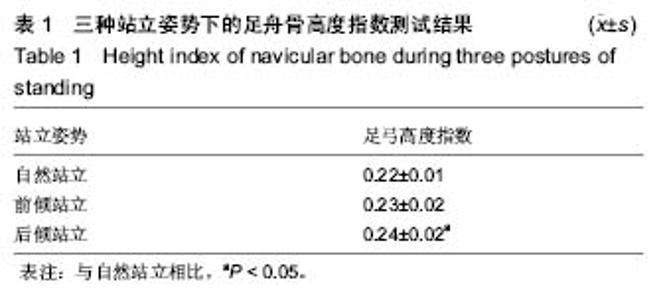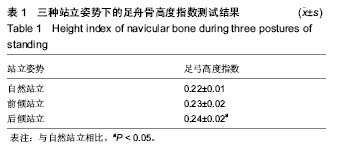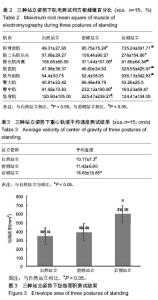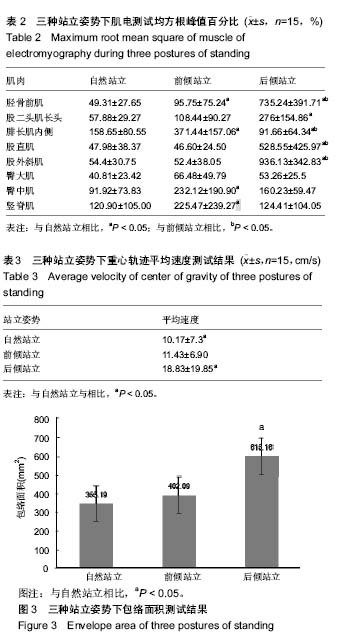| [1] Boonstra TA, Schouten AC, van der Kooij H.Identification of the contribution of the ankle and hip joints to multisegmental balance control. J Neuroeng Rehabil. 2013;10:23. [2] Birinci T, Demirbas SB.Relationship between the mobility of medial longitudinal arch and postural control. Acta Orthop Traumatol Turc. 2017 ;51(3):233-237. [3] 袁刚,张木勋,王中琴,等.正常人足底压力分布及其影响因素分析[J].中华物理医学与康复杂志,2004,26(3):30-33.[4] Page P, Frank CC, Lardner R. Assessment and Treatment of Muscle Imbalance, the JandaApproach. United States: Human Kinetics; 2010:6-150.[5] Fukano M, Fukubayashi T.Motion characteristics of the medial and lateral longitudinal arch during landing. Eur J Appl Physiol. 2009;105(3):387-392. [6] Hughes, Chris. Kinesiology: The Mechanics and Pathomechanics of Human Movement[M]// Kinesiology : the mechanics and pathomechanics of human movement. Lippincott Williams & Wilkins.2009:662-672.[7] Williams DS 3rd, Tierney RN, Butler RJ.Increased medial longitudinal arch mobility, lower extremity kinematics and ground reaction forces in high- arched runners.J Athl Train.2014;49(3): 290-296.[8] Chang YW,Hung W,Wu HW,at al.Measurements of foot arch in standing,level walking, vertical jump and sprint start.Int J Sport Excerc Sci.2010;2(2):31-38.[9] Cote KP, Brunet ME, Gansneder BM, et al. Effects of Pronated and Supinated Foot Postures on Static and Dynamic Postural Stability. J Athl Train. 2005;40(1):41-46.[10] Williams DS 3rd, McClay IS, Hamill J.Arch structure and injury patterns in runners. Clin Biomech (Bristol, Avon). 2001;16(4): 341-347.[11] 朱世杰,王文婷,章露.足部姿态变化对静态姿势稳定控制的即刻作用[J].中国组织工程研究,2012,16(37):6910-6915.[12] 陈平,韩宝,周璐,等.中国居民肛肠疾病患病工作相关因素调查[J].中国公共卫生,2017, 33(11):1628-1631.[13] Han KS,Shin SH,Yu CH,et al.Postural responses during the various frequencies of anteroposterior perturbation. Biomed Mater Eng. 2014;24(6):2537-2545. [14] Hwang S,Tae K,Sohn R,et al.The balance recovery mechanisms against unexpected forward perturbation. Ann Biomed Eng. 2009 ; 37(8):1629-1637. [15] DVM Jurriaan.The effect of perturbation properties on system identification of human balance control during stance. Delft University of Technology.2017.[16] Cavanagh PR, Rodgers MM.The arch index: a useful measure from footprints. J Biomech. 1987;20(5):547-551.[17] 王洪瑞,郑辉,刘琨.站立平衡调节的肌力优化求解与分析[J]. 生物医学工程学杂志,2015,32(1):59-66.[18] 张阳,张秋霞.功能性踝关节不稳者的静态平衡能力[J].中国组织工程研究,2013,17(35):6287-6292.[19] Cheung JT, Zhang M, An KN. Effect of Achilles tendon loading on plantar fascia tension in the standing foot. Clin Biomech (Bristol, Avon). 2006;21(2):194-203. [20] 张燊,张希妮,崔科东,等.足弓的运动功能进展及其在人体运动中的生物力学贡献[J].体育科学,2018,38(5):73-79.[21] Jameson BH, Teague DC.Bilateral navicular body fractures. J Trauma. 2003;54(6):1231-1234.[22] 温子星,祁奇,危小焰,等.前后方向水平姿势扰动对人体站立平衡响应的影响[J].中国康复,2017,32(5):404-407.[23] Fujiwara K,Kiyota N,Maekawa M,et al.Postural control during transient floor translation while standing with the leg and trunk fixed. Neuroscience Letters.2015;594:93-98.[24] 温子星,徐欣,潘景文,等.预测性姿势调节对人体站立受扰后姿势响应影响的研究[J].中国康复医学杂志, 2016,31(10):1104-1110. |





